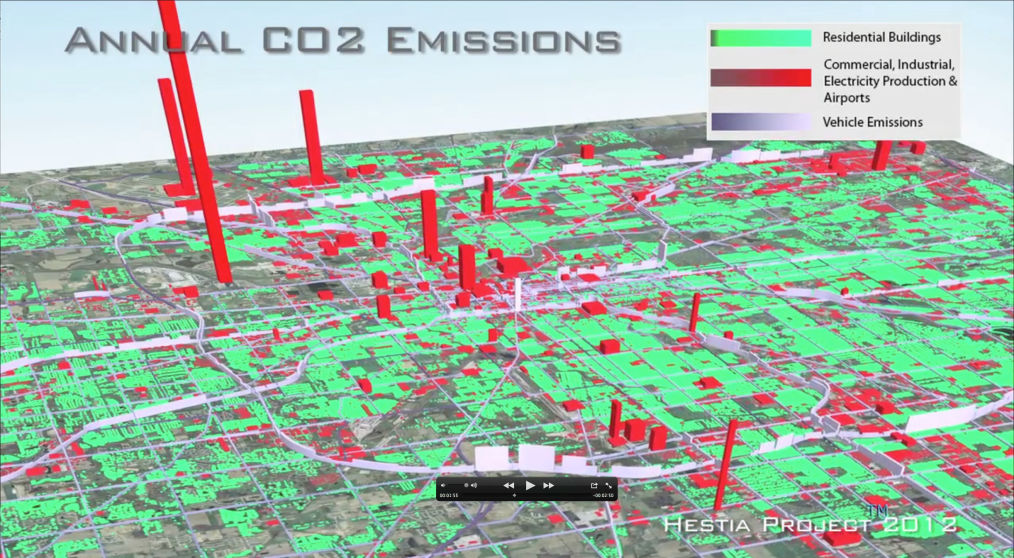- Gurney et al., ESSD, 2019: The largest Hestia city yet covering the entire LA Megacity domain published in Earth System Science Data. The paper describes methods and results and an animation can be found on the Viz page.
- Gurney et al., JGR, 2019: A comparison of ODIAC to Hestia in four US cities published in the Journal of Geophysical Research. This paper demonstrates the limitations of global data products when applied to urban settings and offers metrics for comparison.
- Gurney et al., ES&T, 2012: The is the core Hestia peer-reviewed paper published in Environmental Science and Technology. While Indianapolis (Marion County) is the domain exemplified, the paper provides a general description of the Hestia Project and methods.
- Patarasuk et al., 2016 - This paper analyzes the Hestia results in Salt Lake City, regressing per capita FFCO2 emissions against socioeconomic variables. It proposes policy options for optimal CO2 reductions.
- Whetstone et al., 2018 - This is an overview paper to the Elementa Special Issue that includes over a dozen papers related to the INFLUX experiment in Indianapolis.
- Lauvaux et al., 2016 - Results and methodological description of the Indianapolis CO2 inversion. This constitutes the core reference paper for the inversion method, sensitivity to many aspects of the inversion and the central inversion result.
- Gurney et al., 2017 - The paper attempts to append the Hestia-Indianapolis FFCO2 emissions in order to make them more comparable to the inversion results of Lauvaux et al., 2016. Biosphere respiration is the primary difference and its inclusion brings the Hestia estimate and the inversion estimate to within a few percent.
- Zhou and Gurney, 2010 - A primarily methodological paper, this describes the original Hestia methods on estimating building FFCO2 emissions.
- Zhou et al., 2011 - This paper examined the relationship between remotely sensed anthropogenic heat discharge and energy use from buildings across multiple scales in Indianapolis.
- Davis et al., 2017 - A description of the INFLUX experiment: goals, methods, and architecture of the effort.
NEWS stories on Hestia
Wired Magazine on Hestia-LA
KNAU audio story on Hestia-LA
National Public Radio story
good for Utah ABC channel 4
Salt Lake City channel 13 story
KUER radio story
Deseret News story
Nature News story on the Megacities Carbon Project

